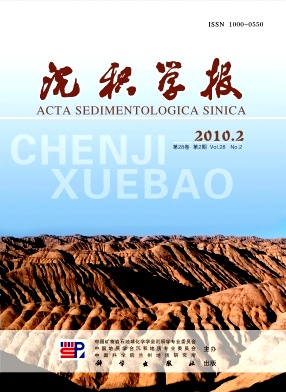The Types and Formation of Quaternary Plinthitic Red Earth
- Received Date: 1900-01-01
- Rev Recd Date: 1900-01-01
- Publish Date: 2010-04-10
-
Key words:
- Quaternary
Abstract: As an important component of the Quaternary red earth, plinthitic red earth has special structures and is distributed over the red earth areas in south China widely. Plinthitic red earth can be divided into homogeneous plinthitic red earth and heterogenous plinthitic red earth according to its texture. Test results show that :(1)Silt(5~50 μm) and clay(<5 μm) are dominant components of homogeneous plinthitic red earth, sand(>50 μm) content is small, less than 3%; grainsize frequency curves are mostly single peak and opositiveskewed, the peak is between5.5 and 6.5, some samples’ grainsize frequency curves are the shape of two peak, peaks are at about 6 and 8 respectively; higher CIA values (84.31%~89.26%) and lower Ba values (0.19~0.30);rare earth element average value and distribution patterns of homogeneous plinthitic red earth are similar to aeolian deposition, 87Sr/86Sr values are close to Jiaxian Pliocene red clay; εNd(0) values are between 10.54 and 12.66, indicate that the genesis of heterogenous plinthitic red earth is stable basically; therefore ,homogeneous plinthitic red earth whose physical and chemical characteristics indicate aeolian genesis and significant impact of weathering could be considered as aggradation plinthitic red earth.(2)Heterogenous plinthitic red earth developed from alluvialflood sediments, slope wash or weathering crust red earth. Silt content of heterogenous plinthitic red earth declines significantly, no more than 50%, sand content increases highly, the coefficients of variation are high in sand (>50 μm) and medium coarse sand (>250 μm) components, all the grainsize results indicate obvious heterogenous features; most of heterogenous plinthitic red earth’s CIA values exceed 84% ,coefficients of variation of chemical elements and weathering indicators are less than 10%, all the chemical characteristics suggest a strong and stable weathering process as a whole.The formation of plinthitic red earth went through the process of weathering and formation of plinthitic in turn. The climate may be mainly humid in the formation period of plinthitic red earth in south China.
| Citation: | LI Fengquan. The Types and Formation of Quaternary Plinthitic Red Earth[J]. Acta Sedimentologica Sinica, 2010, 28(2): 346-355. |






 DownLoad:
DownLoad: